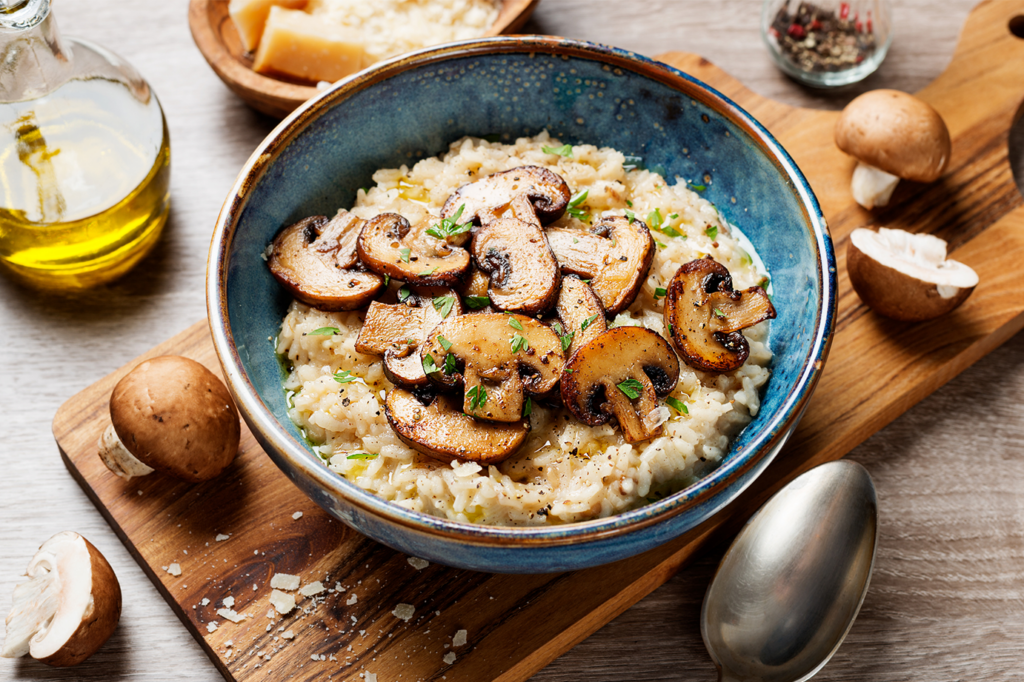
Date published
January 3, 2024
Loved by foodies and chefs around the world, mushrooms are a true culinary gem. Beyond their use as a popular pizza topping, mushrooms carry a diversity of flavours just waiting to be explored. In this guide, you’ll discover some of the most beloved types of mushrooms including Portobello, shiitake, oyster mushrooms, and more. We’ll dive into their unique tastes and textures, highlighting the best ways to use them in your next kitchen creation.
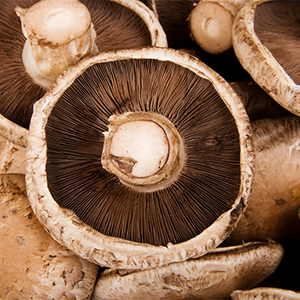
Flavour Profile: Rich, meaty, and earthy.
Culinary Uses: Portobello mushrooms are large and robust, making them ideal for grilling or roasting. They are a fantastic meat substitute in vegetarian dishes. Try them stuffed with cheese, herbs, or other fillings, in your burgers, or sliced into hearty stews.
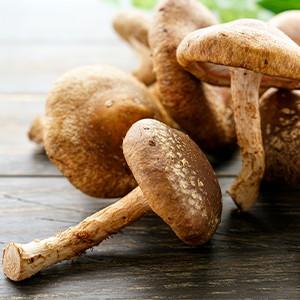
Flavour Profile: Smoky, rich, and buttery.
Culinary Uses: Shiitake mushrooms are revered in Asian cuisine. Their chewy texture and woodsy flavour enrich soups, stir-fries, and noodle dishes. They’re excellent when sautéed with vegetables or used in broths to add depth.
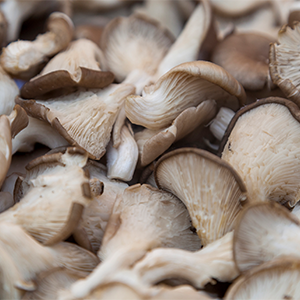
Flavour Profile: Mild, sweet, and slightly woody.
Culinary Uses: Oyster mushrooms have a delicate texture, making them perfect for quick cooking methods. They’re great in stir-fries, sautéed dishes, or simply grilled. Plus, their subtle flavour perfectly compliments seafood and poultry dishes.
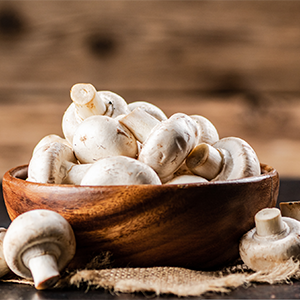 White Button Mushrooms
White Button MushroomsFlavour Profile: Mild, earthy, and when cooked, they develop a more intense flavour.
Culinary Uses: As the most common mushroom variety, white button mushrooms are a staple in many kitchens. They’re perfect for everyday cooking, ideal for sautéing, baking, and stuffing. Incorporate them into casseroles, soups, and salads for an earthy flavour.
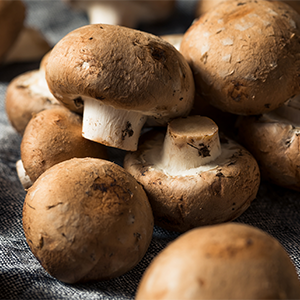
Flavour Profile: Richer and deeper than white mushrooms, with a firm texture.
Culinary Uses: Baby Bellas are versatile and can be used in almost any dish that calls for mushrooms. They are excellent in risottos, pastas, soups, and as a topping for pizzas. Their robust flavour stands up well to grilling and roasting.
Before you dive into cooking, clean your mushrooms by gently wiping with a damp cloth. Pro tip: avoid soaking them, because they absorb water! While you’re cooking, remember that mushrooms release water when cooked, so make sure to give them space in the pan and cook in batches if necessary.
When it comes to flavour, mushrooms pair well with garlic, thyme, parsley, and shallots. They also complement creamy sauces and robust meats—but revisit our recommendations above for the best pairings!
Not only are they delicious—the mushroom benefits for your nutrition are endless. Mushrooms are low in calories, high in fibre, and they’re a great source of protein. They’re also rich in vitamins and minerals including Vitamin D, selenium, and potassium.
Whether you’re a seasoned chef or a home cook, incorporating these mushroom varieties into your dishes can elevate your cooking. Each type offers its unique flavours and textures, making them a versatile and essential add to your next kitchen creation. If you’re a Calgary Co-op customer, you can explore our locally available mushroom varieties by shopping online. Happy cooking!